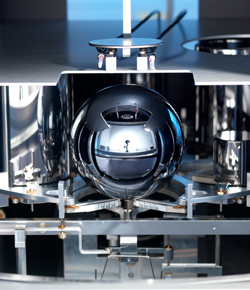
The module will provide a detailed grounding in theoretical and practical aspects of metrology (measurement science) applicable to the subject of Ultra Precision in science & engineering. Following an introduction to the principles and international framework for the bases of measurement, lectures will concentrate on the key aspects of achieving high accuracy measurements of dimensions and temperature, with traceability to the internationally accepted SI system of units.
LocationNational Physical Laboratory, Teddington OrganiserAmir Kayani |
Structure5 days, 22 lectures AssessmentCoursework worth 15 credits |
Objectives
 After successfully completing the module, students should be able to:
After successfully completing the module, students should be able to:
- Understand why international agreement on measurement standards is important and know which international and national organisations they will encounter when considering making traceable measurements and how these organisations relate to one another.
- Understand the basis of worldwide measurement – the SI, how it is defined and how it is evolving and is about to be re-defined and what this means in practical terms.
- Understand that no measurement is traceable (i.e. valid) without a statement of the uncertainty of the result and how to calculate uncertainties and achieve traceability.
- Understand the basic principles of making measurements of: mass, force, pressure, temperature, humidity and dimensions in the context of achieving high precision.
- Communicate how the SI base units of mass, length, temperature and related units of force, pressure and humidity are realised in a practical sense from their definitions.
- Understand the techniques used to perform measurements at the highest level of accuracy, including: interferometry using lasers and X-rays, acoustic thermometry, radiation thermometry, thermal imaging, dynamic pressure sensing, fringe sub-division, mass comparators, force balances.
- Explain and utilise best practice techniques to minimise measurement errors including: reversal processes, precision alignment, refractive index and thermal compensation, elimination of Abbe offset, buoyancy correction, substitution methods, multilateration approaches.
- Use their knowledge to design new experiments and improve existing experimental designs to achieve better precision and generate results which will be accepted by the international community at the highest levels.

